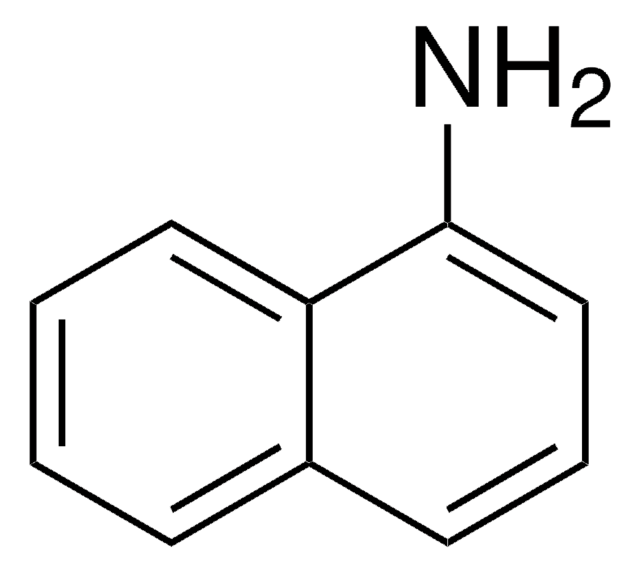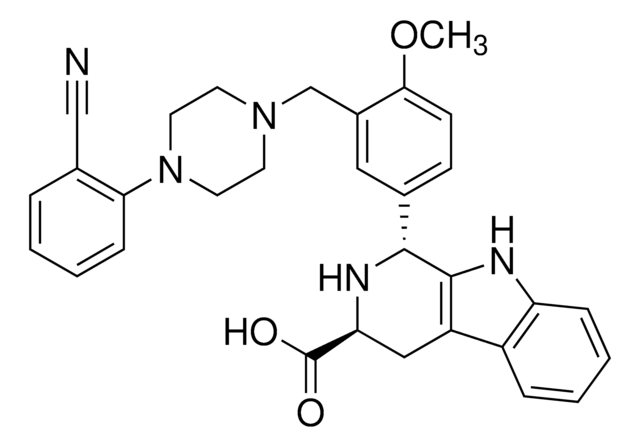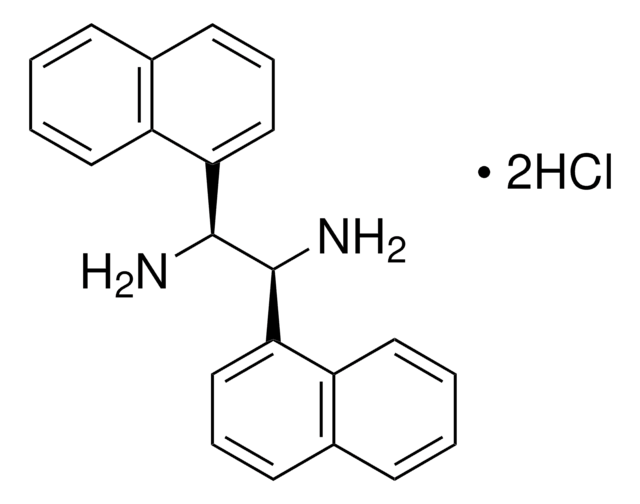Key Documents
222488
N-(1-Naphthyl)ethylenediamine dihydrochloride
ACS reagent, >98%
Synonim(y):
2-(1-Naphthylamino)ethylamine dihydrochloride
About This Item
Polecane produkty
klasa czystości
ACS reagent
Poziom jakości
Próba
>98%
Postać
solid
zanieczyszczenia
≤5% water
mp
194-198 °C (dec.) (lit.)
rozpuszczalność
H2O: passes test
przydatność
passes test for sensitivity to sulfanilamide
ciąg SMILES
Cl.Cl.NCCNc1cccc2ccccc12
InChI
1S/C12H14N2.2ClH/c13-8-9-14-12-7-3-5-10-4-1-2-6-11(10)12;;/h1-7,14H,8-9,13H2;2*1H
Klucz InChI
MZNYWPRCVDMOJG-UHFFFAOYSA-N
Szukasz podobnych produktów? Odwiedź Przewodnik dotyczący porównywania produktów
Powiązane kategorie
Opis ogólny
Zastosowanie
Hasło ostrzegawcze
Warning
Zwroty wskazujące rodzaj zagrożenia
Zwroty wskazujące środki ostrożności
Klasyfikacja zagrożeń
Eye Irrit. 2 - Skin Irrit. 2
Kod klasy składowania
11 - Combustible Solids
Klasa zagrożenia wodnego (WGK)
WGK 3
Temperatura zapłonu (°F)
Not applicable
Temperatura zapłonu (°C)
Not applicable
Środki ochrony indywidualnej
dust mask type N95 (US), Eyeshields, Gloves
Wybierz jedną z najnowszych wersji:
Masz już ten produkt?
Dokumenty związane z niedawno zakupionymi produktami zostały zamieszczone w Bibliotece dokumentów.
Klienci oglądali również te produkty
Nasz zespół naukowców ma doświadczenie we wszystkich obszarach badań, w tym w naukach przyrodniczych, materiałoznawstwie, syntezie chemicznej, chromatografii, analityce i wielu innych dziedzinach.
Skontaktuj się z zespołem ds. pomocy technicznej











